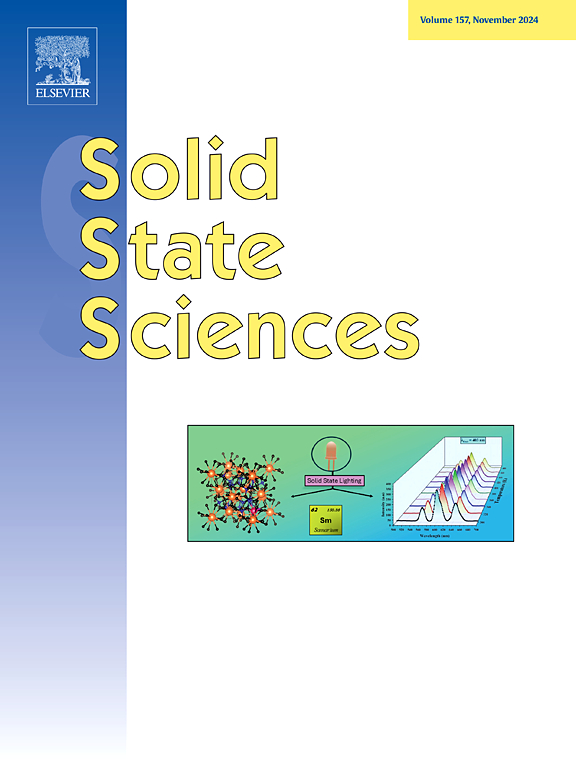G-C3N4-based multi-metal oxide nanocomposites: A new frontier in catalytic performance
IF 3.4
3区 化学
Q2 CHEMISTRY, INORGANIC & NUCLEAR
引用次数: 0
Abstract
Pollution affects land, air, and water, posing serious threats to humanity and other living things. Planning and treating polluted water are essential to safeguarding future generations since water pollution is especially harmful. Current research focuses on the vitiation of organic dyes extracted from industry and drained from water reservoirs. In this work, g-C3N4/Fe2O3/NiO/Dy2O3 and g-C3N4/CeO2/BaO/Al2O3 nanocomposites are synthesized for photocatalysis application. Co-precipitation and ultra-sonication were the synthetic techniques utilized to prepare the g-C3N4/Fe2O3/NiO/Dy2O3 and g-C3N4/CeO2/BaO/Al2O3 nanocomposites. The dyes Rhodamine B (RhB) and Phenol Red (PR) were selected to investigate the nanomaterial's degradation efficiency. The g-C3N4/Fe2O3/NiO/Dy2O3 nanocomposite demonstrated the highest efficiency, 86.37 % degradation RhB and 78 % phenol red, respectively, which showing that it is a strong contender for the treatment of contaminated water. Scavengers' tests were also conducted to establish the primary agent responsible for dye degradation. The results clearly show that hydroxyl radicals are responsible behind the degradation of these organic colors. A unique paradigm of utilizing distinct metal combinations to highlight the practical relevance in the realm of catalytic performances.

g - c3n4基多金属氧化物纳米复合材料:催化性能的新前沿
污染影响土地、空气和水,对人类和其他生物构成严重威胁。规划和处理受污染的水对保护后代至关重要,因为水污染特别有害。目前的研究重点是工业中提取的有机染料和水库中排放的有机染料的污染。本文合成了用于光催化的g-C3N4/Fe2O3/NiO/Dy2O3纳米复合材料和g-C3N4/CeO2/BaO/Al2O3纳米复合材料。采用共沉淀法和超声波法制备了g-C3N4/Fe2O3/NiO/Dy2O3和g-C3N4/CeO2/BaO/Al2O3纳米复合材料。以罗丹明B (Rhodamine B, RhB)和酚红(Phenol Red, PR)为染料考察了纳米材料的降解效率。g-C3N4/Fe2O3/NiO/Dy2O3纳米复合材料对RhB和苯酚红的降解效率最高,分别为86.37%和78%,是处理污染水的有力竞争材料。还进行了清除剂试验,以确定负责染料降解的主要剂。结果清楚地表明,羟基自由基是这些有机颜色降解的原因。一个独特的范例,利用不同的金属组合,以突出在催化性能领域的实际意义。
本文章由计算机程序翻译,如有差异,请以英文原文为准。
求助全文
约1分钟内获得全文
求助全文
来源期刊

Solid State Sciences
化学-无机化学与核化学
CiteScore
6.60
自引率
2.90%
发文量
214
审稿时长
27 days
期刊介绍:
Solid State Sciences is the journal for researchers from the broad solid state chemistry and physics community. It publishes key articles on all aspects of solid state synthesis, structure-property relationships, theory and functionalities, in relation with experiments.
Key topics for stand-alone papers and special issues:
-Novel ways of synthesis, inorganic functional materials, including porous and glassy materials, hybrid organic-inorganic compounds and nanomaterials
-Physical properties, emphasizing but not limited to the electrical, magnetical and optical features
-Materials related to information technology and energy and environmental sciences.
The journal publishes feature articles from experts in the field upon invitation.
Solid State Sciences - your gateway to energy-related materials.
 求助内容:
求助内容: 应助结果提醒方式:
应助结果提醒方式:


